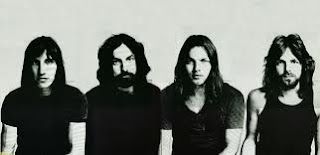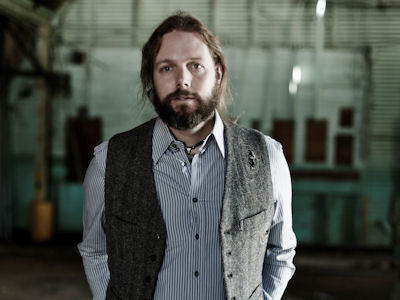Back in 2001 writer/director Richard Kelly introduced himself to the world of cult cinema with his unforgettable film Donnie Darko. The film was an odd time-traveling parable that featured a star studded cast and made a star out of a young unknown actor named Jake Gyllenhaal. The film’s release itself was something of legend; released to terrible reviews in a handful of cities to a dismal box office, the film slowly found its audience and became a small cult phenomenon. Suddenly the weird little film that could was a hit and its creator Kelly got a wee bit cocky. He did a director’s cut that did nothing but complicate the film even more and over explained some mysteries that gave the first cut its real charm. Perhaps this was the first sign of what was to become of Mr. Kelly’s future and his next film Southland Tales.
 Riding the high of Donnie Darko gave Kelly major gumption to create a very ambitious project with Southland. On tap was not only a gigantic event film filled with a cast of celebrities but Kelly began work on a series of graphic novels that would be released a year before the film and would expand a large universe of back story of Star Wars proportions. Everything was going well, Southland was granted a budget three times that of Darko, anyone who was anyone in Hollywood was circling a role in the film and main casting went to Dwayne “The Rock” Johnson, Sarah Michelle Gellar, Seann William Scott and Miranda Richardson. Filling in supporting roles were Justin Timberlake, Mandy Moore, Nora Dunn, Amy Poehler and nearly every one else who read the script. People were falling over themselves to join the incredible second vision of Richard Kelly and the filming went off without a hitch. The studio trusted Kelly and gave him carte blanche on every aspect of the film and the planned universe that would surround it. Then, what luck, Southland Tales was selected to premiere at the prestigious Cannes Film Festival and Kelly was ready with his gigantic three-hour opus ready to unspool and that’s when things went downhill.
Riding the high of Donnie Darko gave Kelly major gumption to create a very ambitious project with Southland. On tap was not only a gigantic event film filled with a cast of celebrities but Kelly began work on a series of graphic novels that would be released a year before the film and would expand a large universe of back story of Star Wars proportions. Everything was going well, Southland was granted a budget three times that of Darko, anyone who was anyone in Hollywood was circling a role in the film and main casting went to Dwayne “The Rock” Johnson, Sarah Michelle Gellar, Seann William Scott and Miranda Richardson. Filling in supporting roles were Justin Timberlake, Mandy Moore, Nora Dunn, Amy Poehler and nearly every one else who read the script. People were falling over themselves to join the incredible second vision of Richard Kelly and the filming went off without a hitch. The studio trusted Kelly and gave him carte blanche on every aspect of the film and the planned universe that would surround it. Then, what luck, Southland Tales was selected to premiere at the prestigious Cannes Film Festival and Kelly was ready with his gigantic three-hour opus ready to unspool and that’s when things went downhill.
As soon as the credits rolled Southland was met with a thunderous boos from the audience and the studio and Kelly began to realize that having no limits on control was probably not the smartest choice that he’d made and as bad word quickly spread a black hole opened up and swallowed Kelly’s ambitious universe whole. The studio declared the Cannes cut un-releasable and demanded gigantic cuts and re-shoots in an effort to reclaim the money they put in to the project. Suddenly gone was the planned graphic novel release, Kelly was to change the film with no prescribed back story outside of what was on the screen. A year passed and Kelly finished a 2 hour-25 minute cut and with his tail between his legs handed it over to the studio to be released in early 2007 with nearly none of the acclaim and hullabaloo that had been dreamed about. The film hit theatres but unlike Darko, and tainted with major bad buzz, it never found its audience and disappeared quickly.
So why, you might ask, should you watch Southland Tales with all of this back story? Well, it’s because the film is one of the most interesting failures in cinematic history. Unlike big failures like Ishtar, Hudson Hawk or Cutthroat Island the time spent “fixing” the film may have been the best thing for it. Going in with as little knowledge about the plot as possible is really the best way to enjoy the film so here’s the bare idea: After a nuclear explosion in Texas the futuristic landscape of California, circa 2008, is on the brink of social, economic and environmental meltdown. When a popular action star (Dwayne Johnson) is suddenly struck with amnesia he seeks out the truth and becomes intertwined with a porn star (Sarah Michelle Gellar) whose reality television project is reaching messiah-like proportions and a police officer (Seann William Scott) whose very body and soul holds the key to a major conspiracy as vast as the whole world.
Every actor does a great job in the film, showing some level of understanding what was going on during production and though the film threatens to go off the rails at nearly every turn, be it thru small musical numbers or with the heaviness of a very prominent Jesus story on tap, nearly every frame of the film, in its own failed way, actually makes sense once the entire picture unfolds. Southland Tales stands as a warning that you should dream as big as you want to when it comes to storytelling but never let your ego get so big that it gets in the way of sharing your story with the world.
Give Southland Tales a whirl and let’s hope that Richard Kelly will rise from the ashes soon. He’s got a lot of things to say.
-Keith Garcia
Denver FilmCenter Programming Manager




















































